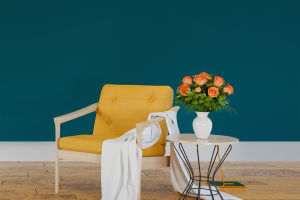Creating beautiful floral arrangements can transform any space and elevate your decor. Whether you’re a novice or an experienced florist.
Mastering different flower-arranging techniques can help you design stunning displays for any occasion. Here are some essential techniques to enhance your flower-arranging skills.
1. The Spiral Method
This technique involves arranging flowers in a spiral pattern around a central point. Start by selecting a focal flower and placing it at the center. Add other blooms in a spiral, ensuring that the stems are angled slightly outward. This creates a dynamic look and allows for a balanced arrangement. Adjust the heights as you go for visual interest.
2. The Grid Method
Using a grid can help create structure in your arrangement. Place a piece of chicken wire or floral tape across the top of your vase to create a grid. This provides support for the stems and helps keep the flowers in place. Begin by placing your largest flowers in the grid's squares, filling in with smaller blooms for a cohesive look.
3. The Triangle Technique
Ideal for creating modern and contemporary arrangements, the triangle technique involves arranging flowers in a triangular shape. Start with three main focal flowers at the base, then add supporting flowers to fill the shape. This technique emphasizes height and creates an eye-catching design that draws the viewer’s attention.
4. The Line Method
This technique focuses on the shape and movement of the arrangement. Use tall, linear flowers such as delphiniums or snapdragons to create height, and shorter, rounder flowers to add fullness at the base. The line method can help guide the viewer’s eye through the arrangement, creating a sense of flow.
5. Color Blocking
Color blocking involves grouping flowers of the same color to create a bold, graphic look. Choose a color palette that complements your space, and arrange flowers in clusters. This technique is particularly effective for making a statement and can be adjusted to suit different moods and themes.
6. Asymmetrical Arrangements
For a more casual and organic look, try asymmetrical arrangements. Use an odd number of flowers and vary their heights and placements to create a relaxed feel. This method allows for creativity and can result in unique and visually appealing arrangements that mimic natural growth patterns.
7. Foliage and Texture
Incorporating different types of foliage and textures can add depth to your arrangements. Use greenery such as ferns or eucalyptus to provide a lush backdrop for your flowers. Consider adding elements like twigs or berries for contrast and interest. Experimenting with various textures can elevate your arrangements and make them more visually appealing.
Mastering these flower-arranging techniques can elevate your floral designs, making them more visually appealing and impactful. Whether you prefer structured arrangements or more organic looks, experimenting with these methods will enhance your creativity and skill as a floral designer. Lykkers, remember, the key to beautiful flower arrangements is practice, so don’t be afraid to explore and create your unique designs!
Flower Arranging 101: Tips And Tricks For Beautiful Bouquets
Video by TODAY


